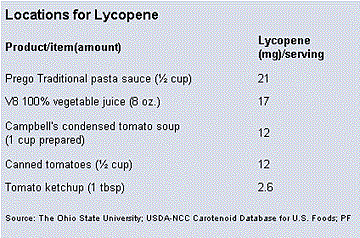
The demand for and knowledge of lycopene is expanding, and LycoVit™, BASF's synthetic version of the carotenoid, is expected to have GRAS approval by April.
A number of epidemiological studies have found an inverse association between high consumption of lycopene-rich vegetables and the incidence of certain types of cancer. A six-year study conducted by Harvard Medical School and the Harvard School of Public Health examined the diets of more than 47,000 men. More than 40 fruits and vegetables were evaluated, and only lycopene-rich tomatoes showed measurable potential to reduce the risk of prostate cancer.
Lycopene has other potential health benefits, says Barry Kaufman, senior product manager with BASF Human Nutrition, Mt. Olive, N.J. “Most of the testing has been on epidemiological evidence. There haven't been too many clinical trials, but some 70 studies have found, in general, that people with larger amounts of lycopene consumption have less risk of cancer and heart disease.” Some studies examining the ingestion of fruits and vegetables have found the carotenoid may also protect against sun damage.

Kaufman believes lycopene, as an ingredient, may well find its way into other applications, similarly to the way beta-carotene has seen its uses expand. Beta-carotene, another carotenoid and vitamin A precursor, is found in products like mango beverages, where it is used both for its nutrient value and for color. Kaufman foresees the same potential for lycopene, providing its health benefits and a reddish color for tomato-based or tomato-implied products.
An Alternative Route
As Kaufman relates, recent studies have found four out of five people fail to attain the five servings a day of fruits and vegetables. Therefore, he believes, Americans need an alternative.“The Council for Responsible Nutrition has the best icon—a fork, knife and pill,” Kaufman says. “It would be great if we all ate the right way, but most Americans do not. Usually, the best alternative is to try to modify the diet and have at least a multi-vitamin, and maybe some other single-entity products, to ensure adequate levels of protection. I would say lycopene falls into that category.”
LycoVit matches the bioavailability of natural lycopene. BASF's version provides a consistent supply and quality that is not dependent on climate or other factors. LycoVit has two variations, a 10% powder and a 20% dispersion. “The powder could be used in multi-vitamins,” says Kaufman, “while the dispersion could probably be used more in the single-entity type products.”
Although lycopene is not yet familiar to the mass market, the positive press surrounding it will not permit it to be secret for long.
For more information:
Barry Kaufman at 973-426-5376
kaufmab@basf.com • www.basf.com
BASF Human Nutrition Write in 218
